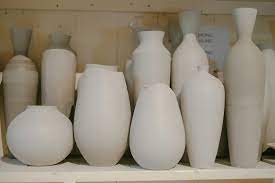People want materials that last long and look good in homes, offices, and factories. Sodiceram meets these demands perfectly. This advanced ceramic, made with sodium compounds, offers unmatched strength and versatility. It changes how spaces are built and how industries function. You will discover what sodiceram is its history unique properties, wide-ranging applications, and promising future. This article, crafted with care, draws on the latest industry insights to provide clear and engaging information in a user-friendly way.
What is Sodiceram?
Sodiceram is a modern ceramic material designed for durability. Manufacturers create it by blending sodium oxide or sodium silicates with silica and alumina, using high-temperature processes to form a solid structure. The name combines “sodium” and “ceramic,” reflecting its key component. This innovative mix addresses weaknesses in traditional ceramics, such as cracking under pressure. Sodiceram performs well in demanding environments, from home kitchens to industrial machines. Years ago, a French company used the name Sodiceram for selling tiles and bathroom products, but today, it refers to this cutting-edge material.
Composition and Manufacturing Process
Creating sodiceram involves precise steps. Manufacturers start with raw materials like sodium compounds, silica, and alumina. These are mixed and heated at high temperatures to form a strong, cohesive material. The process eliminates weak points, ensuring a robust final product. Advanced machinery shapes the ceramic into tiles, parts, or custom forms. Some producers apply protective coatings to enhance resistance to wear. This careful process makes sodiceram suitable for a variety of uses, from decorative surfaces to heavy-duty components.
Key Ingredients
The core of sodiceram lies in its ingredients. Sodium oxide provides flexibility and resistance to heat. Silica adds hardness, making the material tough against scratches. Alumina strengthens the overall structure, ensuring it withstands stress. Together, these components create a ceramic that outperforms traditional options in strength and longevity.
History of Sodiceram
The name Sodiceram first appeared with a company in Reims, France, founded in 1979. This firm focused on wholesale tiles and sanitary products, serving builders and homeowners. It supported local economies and construction projects but struggled against low-cost imports and online competition. By 2021, the company closed its doors. However, the term sodiceram has evolved to represent a new type of ceramic. Researchers built on traditional ceramic methods, adding sodium compounds to improve performance. This development reflects a broader trend of creating materials that meet modern design and industrial needs.
The shift to sodium-based ceramics came from experiments to solve common issues like brittleness. Over time, scientists refined the formula, making sodiceram a reliable choice for today’s challenges. Its growth shows how innovation transforms old ideas into practical solutions.
Properties of Sodiceram
Sodiceram stands out for its exceptional qualities. Manufacturers design it to handle tough conditions, making it a favorite across industries.
Exceptional Durability
Sodiceram resists breaks and chips better than traditional ceramics. Its sodium-based structure absorbs stress, preventing cracks. In testing, it outperforms older materials in high-pressure settings. This durability reduces the need for frequent repairs, saving time and money for users.
Resistance to Heat and Chemicals
Sodiceram handles extreme temperatures without damage. It withstands rapid heat changes, making it ideal for kitchens or industrial furnaces. Chemicals, such as acids or cleaning agents, do not harm its surface. It also absorbs minimal water, keeping it stable in wet environments like bathrooms or labs. These traits ensure safety and cleanliness in sensitive areas.
Eco-Friendly Design
Producing sodiceram uses less energy than many traditional ceramics. Manufacturers often incorporate recycled materials, reducing waste. Its long lifespan means fewer replacements, further cutting environmental impact. This makes sodiceram a smart choice for those prioritizing sustainability without sacrificing quality.
Applications of Sodiceram
Sodiceram’s versatility allows it to shine in multiple fields. Its strength and adaptability meet diverse needs, from homes to high-tech industries.
Home and Architectural Uses
In homes, sodiceram transforms spaces. Builders use it for flooring, wall tiles, and countertops. It mimics the look of natural materials like wood or stone but offers greater durability. In kitchens, it resists heat from hot pans. In bathrooms, its low water absorption prevents mold and ensures safety with non-slip surfaces. Outdoors, sodiceram withstands rain, sun, and frost, making it perfect for patios or garden paths. Its aesthetic flexibility, available in matte or glossy finishes, adds style to any design.
Industrial Applications
Factories rely on sodiceram for components that face extreme conditions. It lines machinery, forms bearings, and creates protective casings. In automotive manufacturing, sodiceram strengthens brakes and engine parts. Its lightweight nature improves fuel efficiency in vehicles. In aerospace, it reduces the weight of plane components, supporting greener travel. These uses highlight its ability to perform under pressure while maintaining reliability.
Medical and Electronic Uses
In healthcare, sodiceram is a game-changer. Its chemical stability makes it safe for medical tools and implants. Dentists use it for crowns, and surgeons rely on it for bone replacements due to its compatibility with the human body. In electronics, it insulates wiring and circuit boards. It also enhances battery performance and heat management in devices, ensuring safety and efficiency. These applications show its precision and adaptability in specialized fields.
Benefits of Choosing Sodiceram
Sodiceram offers practical advantages. Its durability cuts maintenance costs, as it rarely needs repairs. Cleaning is simple, requiring only mild soap and water, thanks to its stain-resistant surface. Designers love its range of finishes, from sleek to textured, allowing creative freedom. Its eco-friendly production appeals to those who value sustainability. Homes and businesses gain value with its long-lasting performance. Installation is straightforward, as it weighs less than stone, speeding up projects. Safety is another perk, with non-slip options for wet areas and no harmful emissions. Colors stay vibrant even under sunlight, ensuring lasting beauty.
Future of Sodiceram
The future looks bright for it. Researchers are exploring new ways to enhance it, such as 3D printing for complex shapes. Smart coatings could make surfaces self-cleaning or even responsive to touch. As demand for sustainable materials grows, it is poised to lead. Its ability to adapt to emerging technologies, like energy-efficient systems or advanced manufacturing, ensures it will remain relevant. Ongoing studies aim to lower production costs, making it accessible for more projects. This material is set to shape the next generation of design and industry.
Conclusion
Sodiceram redefines what ceramics can do. Its sodium-based formula delivers strength, versatility, and sustainability. From stylish home interiors to heavy-duty industrial parts, it meets modern demands with ease. Its eco-friendly production and long lifespan make it a smart choice for the future. As technology advances, sodiceram will continue to evolve, offering new possibilities for builders, designers, and engineers. Choose sodiceram for spaces and products that stand the test of time.







